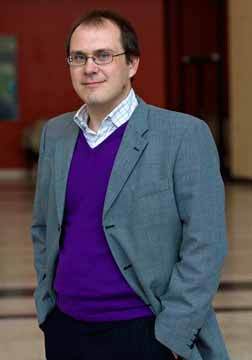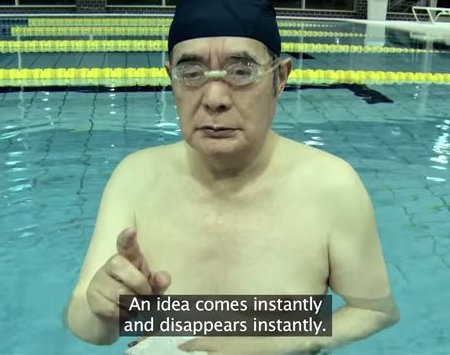Marc Abrahams's Blog, page 345
February 23, 2015
Conceivabilism, inconceivabilism and someone with 200 arms and legs
 Sometimes, philosophers like to construct highly exaggerated imaginary scenarios in order to test the validity of theories – conjuring up, for example, human bodies with a pair of spare eyes in their shoulders. Since there’s no very little limit on how exaggerated such propositions might be, some take on outlandish proportions. Such ideas can push the boundaries of what philosophers call ‘Conceivabilism’ (which considers that which can be reasonably conceived) and stray into the territory of what Improbable calls ‘Inconceivabilism’ (that which can’t).
Sometimes, philosophers like to construct highly exaggerated imaginary scenarios in order to test the validity of theories – conjuring up, for example, human bodies with a pair of spare eyes in their shoulders. Since there’s no very little limit on how exaggerated such propositions might be, some take on outlandish proportions. Such ideas can push the boundaries of what philosophers call ‘Conceivabilism’ (which considers that which can be reasonably conceived) and stray into the territory of what Improbable calls ‘Inconceivabilism’ (that which can’t).
Some examples are presented in a paper by Dr. Jakob Elster (pictured) from the University of Oslo, Norway in the Journal of Applied Philosophy, Vol. 28, No. 3, p. 201 entitled : How Outlandish Can Imaginary Cases Be?
Dr. Elster cites the work of professor Kasper Lippert-Rasmussen of Aarhus University, Denmark, specifically the paper ‘Against Self-Ownership: There Are No Fact-Insensitive Ownership Rights over One’s Body’ in: Philosophy and Public Affairs, Vol. 36, No. 1, 2008, p. 86-118. which he says, is “a cornucopia of outlandish cases.” e.g.:
“Let us consider an eye redistribution scheme in which half the population is born with two pairs of eyes and the other half with no eyes. In sighted individuals, one pair of eyes is located normally and fulfills the usual function. The other pair is located inside the human body, say, in the shoulder. Although this latter pair would enable those who have them to see if they were surgically moved to the eye sockets, they play no role where they are. Indeed they cannot perform any visual or other bodily function without being moved. Suppose further that the body of a person born with two pairs of eyes will expel the spare pair when that person reaches twenty years of age. The pair can then easily be reabsorbed into the shoulder of its owner, or the owner can transfer his spare eyes to a blind person.”
Or, instead, or additionally :
“Suppose, for instance, that people are born with huge bodies they can barely move, bodies with two hundred legs and arms. At any given moment, they can at best sense and control 1 percent of their bodies, although they can readily determine which percent that is. Since their bodies heal very easily, their ability to control their lives is promoted best if 99 percent of each body is removed in such a way that these abnormal individuals end up with what are, for us, normal human bodies.”
Are such outlandishisms justified, or indeed helpful? Dr. Elster concludes his paper thus :
“I have argued that we do sometimes need to consider outlandish cases in order to arrive at the true moral principles which we need for this world. But if we are, as I have suggested, unable to imagine these outlandish cases, we might never be able to identify the true moral principles we need. So even if we adopt a ‘method of avoidance’, bracketing general scepticism for the purpose of developing a sound ethical methodology, a new form of scepticism reappears as the result of this methodological discussion. How this new scepticism can be dealt with is an issue for further investigation.”
February 22, 2015
Mario Ettore Giardini joins Luxuriant Flowing Hair Club for Scientists (LFHCfS)
Mario Ettore Giardini has joined the Luxuriant Flowing Hair Club for Scientists (LFHCfS). He says:
I am a biomedical engineer, and I design instruments for field medicine,to support healthcare in the remotest areas of the world. Hair has only little to do with my research, and this is why I need plenty of it.
Mario Ettore Giardini, Ph.D, LFHCfS
Lecturer in Digital Health
Department of Biomedical Engineering
University of Strathclyde
Glasgow, UK

Belgian TV Ig Nobel highlights
Lieven Scheire of the Belgian TV program Nerdland produced these highlight compilations of the 2013 and 2014 Ig Nobel Prize ceremonies:
Logic Puzzle: How many logic assumptions in this press release?
This week’s Expert Logic Puzzle is simple.
How many leaps of faith are necessary to make a sturdy chain of logic that ties together the parts of a single press release? Count the number of logic assumptions in the text of the press release [to see the entire press release, click on the link].
Start point of the chain of logic: The chain of logic begins in the middle of the press release, with this phrase:
“With this study, conducted on genetically modified mice…”
Penultimate link in the chain of logic (presented at the very start of the press release!):
“Might living a structured life with regularly established meal times and early bedtimes lead to a better life and perhaps even prevent the onset of mental illness? That’s what’s suggested in a study led by Kai-Florian Storch, PhD, of the Douglas Mental Health University Institute and McGill University, which has been published in the online journal eLife.
End point of the chain of logic (presented as the headline atop the press release):
“Deconstructing mental illness through ultradian rhythms“.
Possible hints, for logic-puzzle-solving beginners: The press release contains two sub-headlines. One sub-headline says:
A novel hypothesis
The other sub-headline says:
Groundbreaking
BONUS (just for fun, not directly connected to this week’s puzzle): Here’s video of a man trying, in a mere nine minutes, to identify the logical assumptions in a different, shorter chain of text:
February 21, 2015
Dr. NakaMats discusses his ideas for better ideas
Dr. NakaMats, possibly the greatest man in the world, granted an interview to Jack Preston of Virgin Entrepreneur.
Dr. NakaMats was awarded the 2005 Ig Nobel Prize for nutrition, for photographing and retrospectively analyzing every meal he has consumed during a period of 34 [now, in 2015, 44] years (and counting). Next month (March), in the company of several other Ig Nobel Prize winners, he will be the star of stars on the upcoming Ig Nobel tour of Europe, sharing his ideas with audiences in London, Aarhus, Copenhagen, and Stockholm.
Here are excerpts from the Virgin Entrepreneur interview:
Better ideas with Dr NakaMats
Yoshiro Nakamatsu, or Dr NakaMats as he is more widely known, is one of the world’s leading inventors with over 3,500 patents to his name. We sat down with the cult hero to find out how we can all come up with better ideas.
It’s not easy to forget Dr NakaMats’ most famous invention, the Floppy Disk, with the entrance to his Tokyo residence set inside a door-sized replica of the idea which he claims to have come up with in 1952, before later licensing it to IBM in the late 1970s. Since then he has worked tirelessly to cement his positon as one of the world’s most prolific inventors, with his list of patents including a self-defence wig, a cigarette for activating the brain, jumping shoes, the ‘Enerex System’ for generating hydrogen and oxygen along with a condom that comes with an embedded magnate for “improving sensitivity in the female organs”.
With a lifetime of weird and wonderful inventions behind him Dr NakaMats is now facing his biggest challenge to date, having recently being diagnosed with prostate cancer….
…To help with the recording of ideas during this time, Dr NakaMats has even invented waterproof paper and pencils, claiming “an idea comes instantly and disappears instantly”.
By getting as close to death as possible, Dr NakaMats believes we will have our greatest ideas. Let us hope that his theory is proven to be correct as he continues his mission to find his most important invention to date.
They gamely plant a secret password in the participant’s brain
They gamely plant a secret password in the participant’s brain, they say, in this presentation:
“Neuroscience Meets Cryptography: Designing Crypto Primitives Secure Against Rubber Hose Attacks,” Hristo Bojinov [Stanford University], Daniel Sanchez and Paul Reber [Northwestern University], Dan Boneh [Stanford University], Patrick Lincoln [SRI], 21st USENIX Security Symposium, August 8-12, 2014, Bellevue, Washington. (Thanks to Bruce Schneier for bringing this to our attention.) The authors explain:
“Cryptographic systems often rely on the secrecy of cryptographic keys given to users. Many schemes, however, cannot resist coercion attacks where the user is forcibly asked by an attacker to reveal the key. These attacks, known as rubber hose cryptanalysis, are often the easiest way to defeat cryptography…. We use a carefully crafted computer game to plant a secret password in the participant’s brain without the participant having any conscious knowledge of the trained password. While the planted secret can be used for authentication, the participant cannot be coerced into revealing it since he or she has no conscious knowledge of it.”
The team discussed this at the symposium:
February 20, 2015
Liszt is on the list (of musical chill inducers)
 A good number of scholarly studies have examined the enigmatic ability of music to sometimes induce ‘The Chills’ in humans, See, for example : ‘Musical Piloerection’, (by Björn Vickhoff, PhD, Rickard Åström, MFA, Töres Theorell, MD, PhD, Bo von Schéele, PhD, and Michael Nilsson, MD, PhD) in Music and Medicine, April 2012 vol. 4 no. 2 82-89. For those who wish to experiment (possibly even self-experiment) with such things, another group of researchers, from the Centre of Interdisciplinary Research on Music Media and Technology (CIRMMT) of McGill University, US (Valorie N. Salimpoor, Mitchel Benovoy, Gregory Longo, Jeremy R. Cooperstock, and Robert J. Zatorre) have compiled a list of musical excerpts which they found can sometimes induce The Chills (listed here in ascending order of chilliness)
A good number of scholarly studies have examined the enigmatic ability of music to sometimes induce ‘The Chills’ in humans, See, for example : ‘Musical Piloerection’, (by Björn Vickhoff, PhD, Rickard Åström, MFA, Töres Theorell, MD, PhD, Bo von Schéele, PhD, and Michael Nilsson, MD, PhD) in Music and Medicine, April 2012 vol. 4 no. 2 82-89. For those who wish to experiment (possibly even self-experiment) with such things, another group of researchers, from the Centre of Interdisciplinary Research on Music Media and Technology (CIRMMT) of McGill University, US (Valorie N. Salimpoor, Mitchel Benovoy, Gregory Longo, Jeremy R. Cooperstock, and Robert J. Zatorre) have compiled a list of musical excerpts which they found can sometimes induce The Chills (listed here in ascending order of chilliness)
• Holst, First Suite in E Flat, Classical, score 9:07
• Shostakovich, Symphony No. 11 – Mov. 4,Classical, score 10:00
• Phish, You Enjoy Mylsef, Jazz Fusion, score 10:50
• Godspeed You! Black Emperor, Static, Post-Rock, score 11:20
• Tchaikovsky, Symphony No. 4 – Mov. 1, Classical, score 12:32
• Mahler, Symphony No. 2 – Mov. 1, Classical, score 13:00
• Shostakovich, 11th Symphony – Mov. 2, Classical, score 13:45
• Mahler, Symphony No. 1 – Mov. 1, Classical, score 14:00
• Shostakovich, Symphony No. 11 – Mov. 2, Classical, score 14:00
• Copland, Appalachian Spring Suite, Classical, score 20:00
… and, at number 1, chillwise,
• Shostakovich, Symphony No. 4 – Mov. 3, Classical, score 20:30
See: ‘The Rewarding Aspects of Music Listening Are Related to Degree of Emotional Arousal’, PLOS | ONE, October 16, 2009.
Note: The list included Liszt, whose ‘Danse Macabre’ (a.k.a. Totentanz), scored a relatively low 0.27
Also see (and hear): ‘Kiss On My List’ (which may or may not induce The Chills)
A million is a nice number
A number doesn’t necessarily mean much, but it is pleasing to see that my TEDMED talk has had more than a million views.
As a bonus, here’s a little video about a million random digits:
February 19, 2015
Dreaming of Understanding What Student Eaters Dream About
Inspired by Winsor McKay’s comic strip, which also inspired the old movie you see here, two researchers, who work at what they call The Dream and Nightmare Laboratory in Montreal, asked students about their dreams and their eating habits.
The resulting study is:
“Dreams of the Rarebit Fiend: food and diet as instigators of bizarre and disturbing dreams,” Tore Nielsen and Russell A. Powell, Frontiers in Psychology, epub February 17, 2015. (Thanks to Neil Martin for bringing this to our attention.) The authors, at the Université de Montreal, Montreal, and Grant McEwan University, Edmonton, Canada, explain:
“In the early 1900s, the Dream of the Rarebit Fiend comic strip conveyed how the spicy cheese dish Welsh rarebit leads to bizarre and disturbing dreams. Today, the perception that foods disturb dreaming persists. But apart from case studies, some exploratory surveys, and a few lab studies on how hunger affects dreaming, there is little empirical evidence addressing this topic. The present study examines three aspects of the food/dreaming relationship; it attempts to: (1) assess the prevalence of the perception of food-dependent dreaming and the types of foods most commonly blamed; (2) determine if perceived food-dependent dreaming is associated with dietary, sleep or motivational factors; and (3) explore whether these factors, independent of food/dreaming perceptions, are associated with reports of vivid and disturbing dreams. Three hundred and ninety six students completed questionnaires evaluating sleep, dreams, and dietary habits and motivations.”
February 18, 2015
Electric tortoise robots – the Bristol originals
If you haven’t come across Elmer and Elsie (c. 1948/49), William Grey Walter’s electric tortoises (or possibly turtles), may we recommend this video ‘Bristol’s robot tortoises have minds of their own’
More info here, courtesy Bristol Robotics Laboratory.
Marc Abrahams's Blog
- Marc Abrahams's profile
- 14 followers





